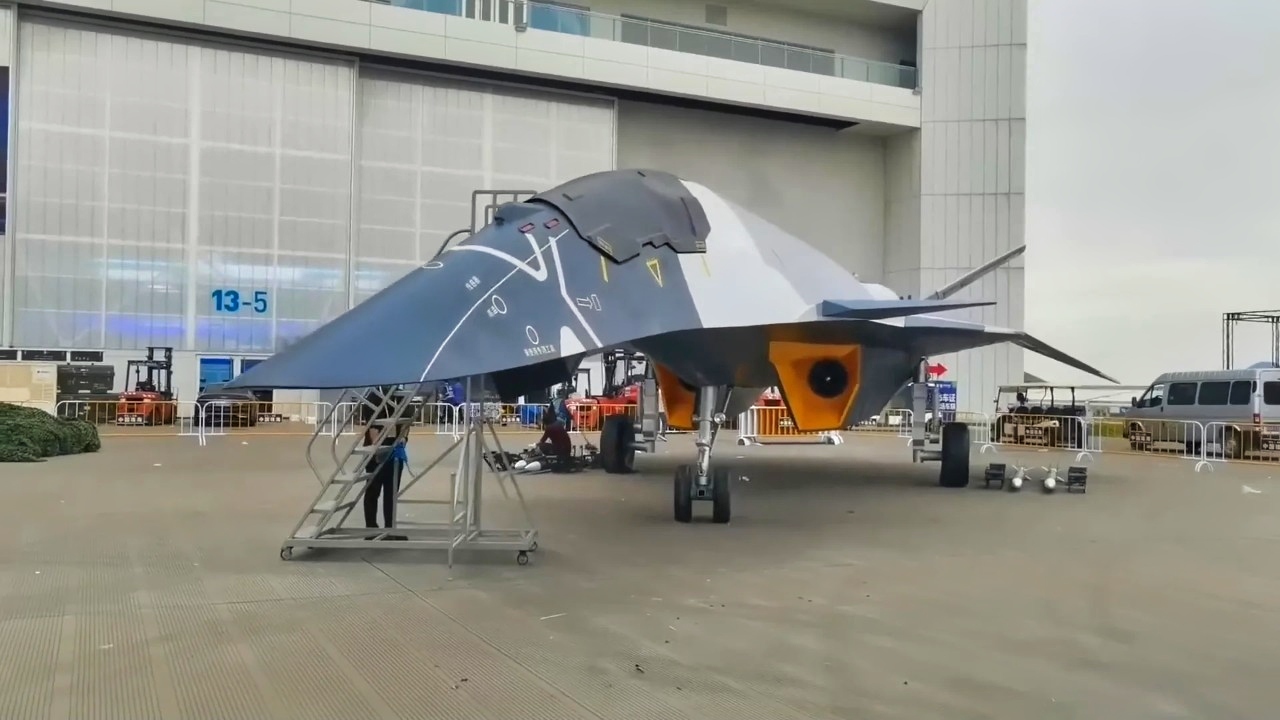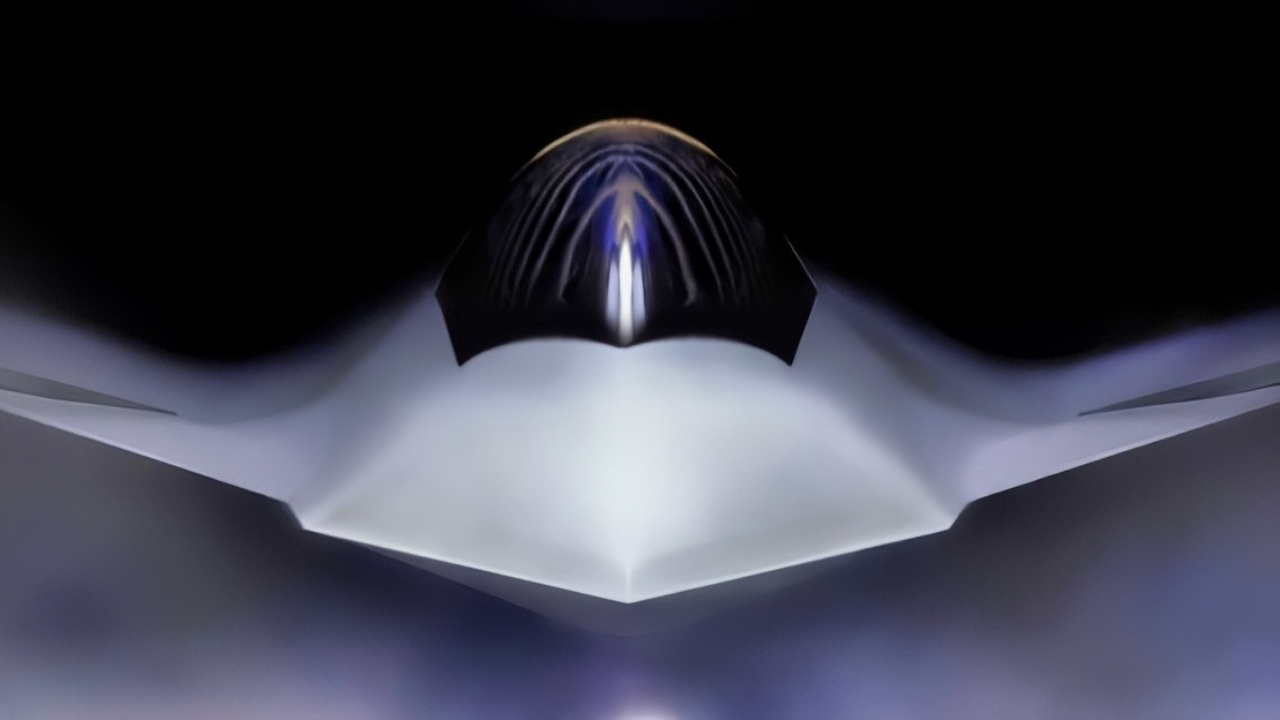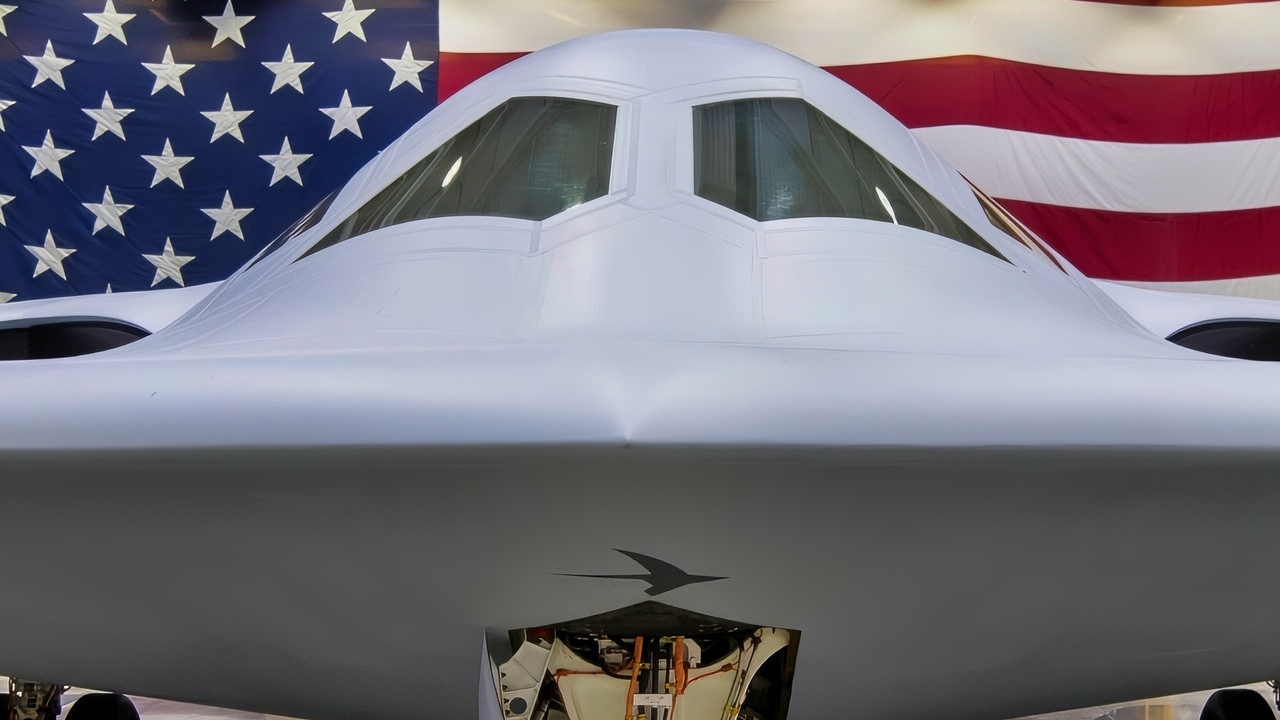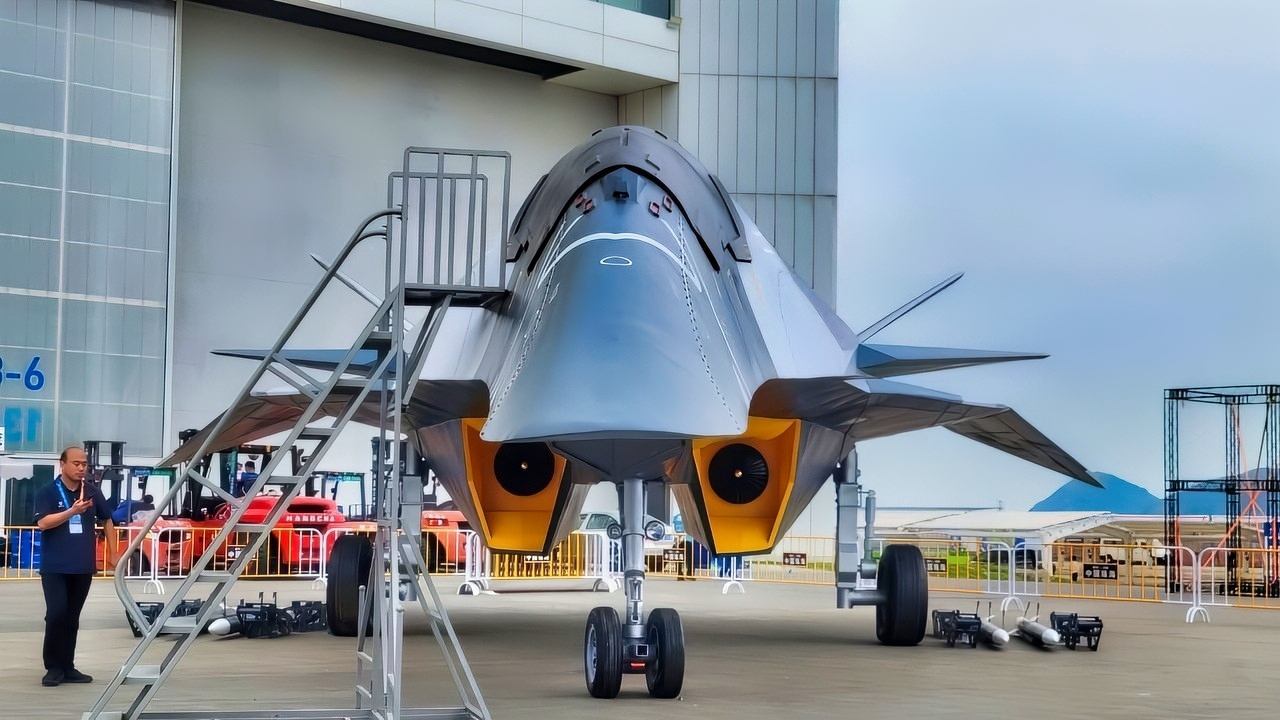Key Points and Summary – China’s 2024 unveiling of the “White Emperor” (Baidi), a full-scale mock-up of a sixth-generation “space-air” fighter, has sparked intense debate over its authenticity.
-While Beijing promotes it as a tailless, hypersonic-capable stealth aircraft, Western analysts are highly skeptical.

Image Credit: X screenshot.
-Experts like Reuben Johnson have pointed out significant design flaws, such as control surfaces that would act as “major radar reflectors” and wings too small for long-range flight.
-The consensus among U.S. experts is that the “White Emperor” is likely a “psychological gambit”—a propaganda bluff designed to rattle Western analysts and goad the U.S. into a costly, high-tech arms race, mirroring the “Reagan’s ‘Star Wars'” strategy that bankrupted the Soviets.
China’s White Emperor: Is It Actually A 6th Gen Stealth Fighter?
The “White Emperor” is a conceptual, full-scale mock-up of a Chinese sixth-generation “space-air” fighter unveiled at the 2024 Zhuhai Air Show, which aims to showcase Beijing’s technological advances in its aerospace industry.
Presented by the Aviation Industry Corporation of China (AVIC), and known as the “Baidi.”
This tailless, diamond-wing design appears optimized for stealth. It is intended to operate at near-space altitudes, featuring advanced capabilities such as AI, directed-energy weapons, hypersonic weapons, and hypersonic speed.
However, many analysts are skeptical of its feasibility and consider it propaganda, citing design flaws and the lack of operational prototypes.
The Baidi is a sixth-generation fighter jet concept developed by China’s Aviation Industry Corporation (AVIC). It is designed as an integrated space-air fighter. The Baidi is part of the Nantianmen Project, a comprehensive space technology research program that blends imagination with advanced technology. This project, created by AVIC Global, includes many new military concepts, such as the Baidi and Xuannv space fighters.

White Emperor 6th Generation Fighter China. Image Credit: Creative Commons.
Is China Taking a Page Out of Ronald Reagan’s Playbook?
China’s threat is real. It has rapidly expanded its military and advanced exponentially in naval and air forces in record time. However, some skeptics believe that China is merely playing games with the US to make it appear closer to the sixth-generation air/space fighter than it actually is.
During the Cold War, Ronald Reagan broke the Soviet Union by getting the Soviets to jump into trying to build so many new weapons programs to keep up with the US that it bankrupted their economy.
With an already over-bloated national budget, the US is $36 trillion in debt. And although Elon Musk and DOGE found more and more wasteful spending, there is a lot more to be done. Is Xi Jinping playing the same game by showcasing a fighter that is more bluff than real?
If that is the case, then China is playing the US, and we’ve fallen into the same trick that the Soviet Union did during the Reagan years.
However, the Baidi may have flown for the first time in late December alongside the fifth-generation J-20 Mighty Dragon fighter.

J-20 Stealth Fighter. Image Credit: PLAAF.
A Look At The White Emperor
The mockup shown in China is undoubtedly impressive. The White Emperor has a tailless, diamond-shaped airframe and wings. The Baidi has improved stealth features built in to avoid radar detection. The weapons bay has been elongated to accommodate nuclear-tipped hypersonic missiles.
This design would put China on par with or ahead of the U.S. Air Force’s Next-Generation Air Dominance (NGAD) fighter program, which will be its main competitor in a future combat scenario.

Shown is a graphical artist rendering of the Next Generation Air Dominance (NGAD) Platform. The rendering highlights the Air Force’s sixth generation fighter, the F-47. The NGAD Platform will bring lethal, next-generation technologies to ensure air superiority for the Joint Force in any conflict. (U.S. Air Force graphic)
Unlike the NGAD, anti-satellite weapons, nuclear-capable hypersonic missiles, and even directed-energy (laser) systems, the Baidi is designed for near-space altitude operations. It is the second sixth-generation aircraft to fly after the B-21 Raider stealth bomber.
“The jet also seems to be equipped with side and upper air intakes, a dual-bogey main undercarriage and split airbrakes or flaperons, which indicate its advanced aerodynamic and performance features,” according to the EurAsian Times.

The B-21 Raider was unveiled to the public at a ceremony December 2, 2022 in
Palmdale, Calif. Designed to operate in tomorrow’s high-end threat environment, the B-21 will play a critical role in ensuring America’s enduring airpower capability. (U.S. Air Force photo)
Built For Speed and Stealth
The sleek and aerodynamic lines highlight the PLAAF’s prioritization of stealth technology: “The fighter’s pointed, rounded nose is meticulously engineered to slice through the air with minimal turbulence, while its overall shape seamlessly blends into the sky. The aircraft’s cockpit canopy features a dark, multi-sectional design, likely layered to reduce reflective signatures.”
With its diamond-shaped airframe, the Baidi is built for speed.
Chengdu Aerospace’s chief designer estimated early in 2024 that Beijing could field an operational sixth-generation platform by 2035.
Analysts Skewer The “Mock Up” Of The White Emperor
Reuben Johnson has nearly four decades of experience in analyzing foreign weapons systems. And he isn’t buying the “White Emperor” being a legitimate 6th-generation stealth fighter. In fact, it is quite the opposite.
“There is plenty to suggest the White Emperor is nothing near a real design,” he wrote. “First, the aircraft would never have the level of radar cross-section reduction a modern fighter needs. The aircraft is supposed to be stealthy, but its forward and aft control surfaces would end up being major radar reflectors.
“Meanwhile, the aircraft’s wings are far too small for an aircraft needing to cover the ranges this sort of platform would be required to fly.
“One interpretation is that the designers are trying to use the center fuselage as part of the wing area – a clever design concept used by the team at Saab with the latest JAS-39E/F fighter.”
Other American media outlets met China’s boasts with plenty of doubt. The Washington Post, in a November 14 piece, cited U.S. aerospace experts who dismissed the space-faring claims as implausible, arguing that the technology to sustain a fighter in orbit remains decades away.
The piece quoted a former Pentagon official who argued that China’s real advancements lie elsewhere, not in fake space fighters but in proven platforms like the J-20 and J-35A.
This skepticism found echoes in other corners of the U.S. press. The National Interest, in a November 14 column, framed the White Emperor as a psychological gambit, designed to rattle Western analysts and goad the U.S. into overreacting.
About the Author: Steve Balestrieri
Steve Balestrieri is a National Security Columnist. He served as a US Army Special Forces NCO and Warrant Officer. In addition to writing on defense, he covers the NFL for PatsFans.com and is a member of the Pro Football Writers of America (PFWA). His work was regularly featured in many military publications.
More Military
China’s New J-35 Navy Stealth Fighter Summed Up in 2 Words
China’s ‘Mighty Dragon’ J-20 Air Force Stealth Fighter Summed Up in 2 Words
China Is Trying to Turn the Indo-Pacific Into a Giant U.S. Navy ‘No-Go Zone’
$13 Billion Mistake? USS Gerald R. Ford Is the Navy’s Aircraft Carrier Agony
China’s ‘Thousands of Missiles’ Have a Message for U.S. Navy Aircraft Carriers











Krystal cane
October 27, 2025 at 9:45 pm
Look like 5 year old made it